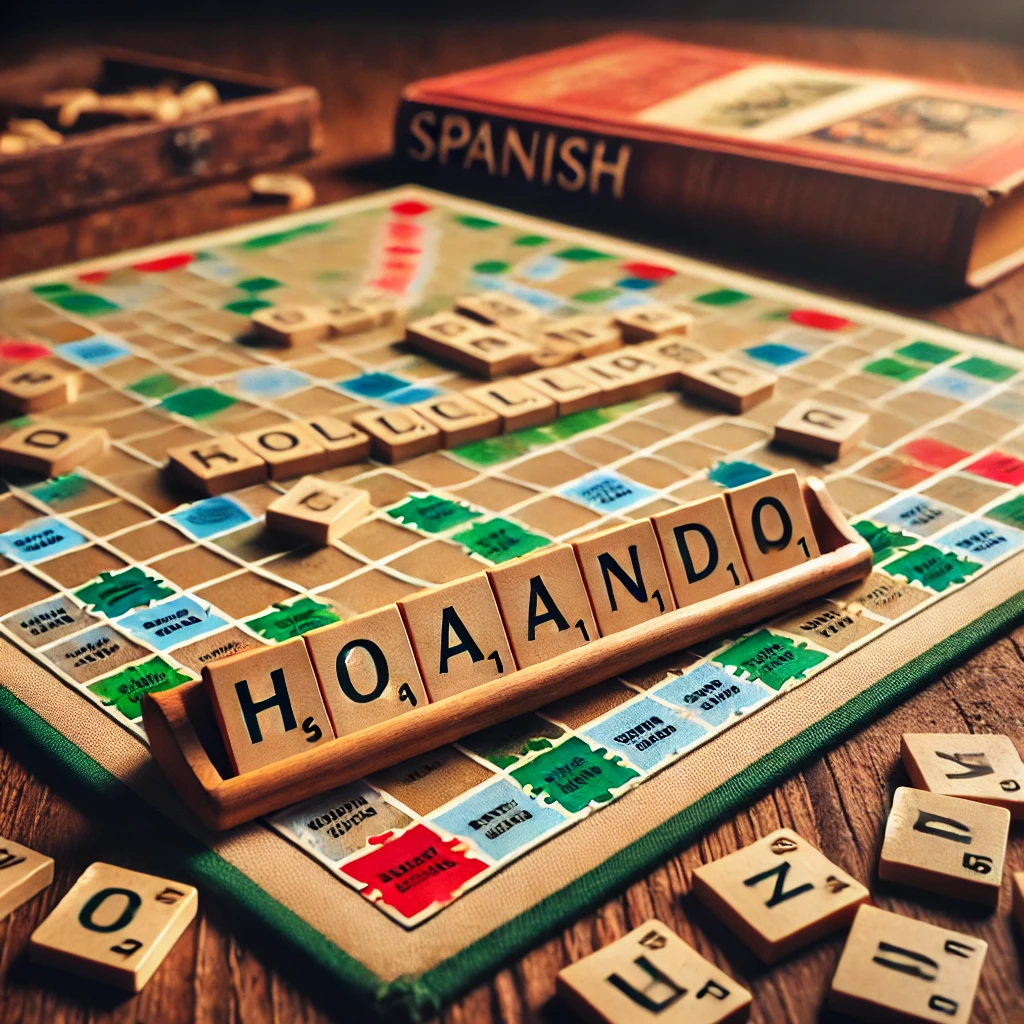The San José shipwreck, a Spanish galleon that sank off the coast of Colombia in 1708, is at the center of a contentious ownership dispute. The ship carried a cargo of gold, silver, and emeralds worth billions of dollars, making it a highly sought-after treasure. The Colombian government, Spanish state, a US salvage company, and indigenous groups all claim rights to the wreck, leading to legal battles in various courts, including the Permanent Court of Arbitration at the Hague.
The Colombian government aims to raise the remains of the San José and display it in a museum, while treasure hunters emphasize the commercial value of the cargo, estimated at up to $18 billion. However, archaeologists argue that the wreck, like many others scattered across the world, should be left undisturbed. They view the San José as a historical site and a burial ground for the approximately 600 people who perished when the ship sank.
The San José was attacked by the British and sunk during a conflict between Spain and Britain in 1708. The wreck remained on the seabed until the 1980s when a US salvage company claimed to have found it. Since then, multiple parties have laid claim to the treasure, including the Spanish state, indigenous groups from Bolivia and Peru, and the US salvage company. The debate over ownership and the fate of the treasure continues to be a complex and unresolved issue.
While the treasure hunters estimate the value of the San José’s cargo to be in the billions, some experts question the validity of these estimates. The lack of a clear legal framework regarding ownership of shipwrecks complicates the situation further. The United Nations’ Convention on the Law of the Sea and the Unesco Underwater Cultural Heritage 2001 Convention provide some guidelines, but many countries, including Colombia and the US, have not ratified the latter.
For maritime archaeologists like Juan Guillermo Martín and deep-sea diver Rodrigo Pacheco Ruiz, the San José represents a valuable historical and archaeological site that should be preserved in its underwater context. They argue that the wreck, along with its treasure and human remains, holds scientific rather than commercial value. The ongoing battle over the ‘Holy Grail’ of shipwrecks underscores the complexities of ownership, preservation, and exploration of underwater cultural heritage.
Original news source: The fierce battle over the ‘Holy Grail’ of shipwrecks (BBC)
🎧 Listen:
Slow
Normal
Fast
📖 Vocabulary:
| 1 | contentious | Likely to cause disagreement or argument |
| 2 | galleon | A large sailing ship used from the 15th to 18th centuries, especially by Spain |
| 3 | salvage | The act of saving or recovering something from potential loss or destruction |
| 4 | perished | Died, especially in a sudden or tragic way |
| 5 | seabed | The bottom of the sea or ocean |
| 6 | validity | The quality of being logically or factually sound; soundness or cogency |
| 7 | ratified | Formally approved or confirmed |
| 8 | maritime | Related to the sea, especially in relation to seafaring commercial or military activity |
| 9 | archaeological | Related to the study of human history and prehistory through the excavation of sites and the analysis of artifacts |
| 10 | unresolved | Not settled or resolved |
| 11 | framework | A basic structure underlying a system, concept, or text |
| 12 | guidelines | A set of rules or instructions that are given by an official organization |
| 13 | heritage | Valued objects and qualities such as cultural traditions that have been passed down from previous generations |
| 14 | preservation | The act of maintaining something in its original or existing state |
| 15 | exploration | The action of traveling in or through an unfamiliar area in order to learn about it |
Group or Classroom Activities
Warm-up Activities:
– Charades
Instructions: Divide the class into two teams. Write down key words related to the article on separate cards. One student from each team will come to the front and pick a card without showing it to their team. They will then have to act out or mime the word on the card, while their team tries to guess what it is. Set a time limit for each round and keep score.
– News Summary
Instructions: Ask students to work in pairs and summarize the main points of the article in their own words. Each pair will then present their summary to the class. Encourage them to focus on key information and to practice paraphrasing and using appropriate language for summarizing news articles.
– Opinion Poll
Instructions: Prepare a list of statements related to the ownership dispute over the San José shipwreck. Divide the class into groups and have them discuss each statement, expressing their opinions and reasons for their stance. After the discussion, conduct a class poll to see which opinions are the most common among the students.
– Vocabulary Pictionary
Instructions: Write down key vocabulary words from the article on separate pieces of paper. One student will pick a word and have to draw it on the board while the rest of the class tries to guess what it is. The student cannot speak or write any letters or numbers. This activity will help reinforce vocabulary from the article in a fun and engaging way.
– Think-Pair-Share
Instructions: Pose a question related to the article to the class. Ask students to think about their answer individually for a minute. Then, have them pair up with a partner to discuss their answers. Finally, open up the discussion to the whole class, allowing students to share their thoughts and engage in a group conversation about the topic.
🤔 Comprehension Questions:
1. What are the different parties involved in the ownership dispute over the San José shipwreck?
2. What is the Colombian government’s goal regarding the remains of the San José?
3. Why do archaeologists believe the wreck of the San José should be left undisturbed?
4. How did the San José sink in 1708?
5. Who are some of the parties that have claimed rights to the treasure of the San José shipwreck?
6. What complicates the situation regarding ownership of shipwrecks like the San José?
7. What guidelines do the United Nations’ Convention on the Law of the Sea and the Unesco Underwater Cultural Heritage 2001 Convention provide regarding ownership of shipwrecks?
8. According to maritime archaeologists, what value does the San José hold beyond its commercial worth?
Go to answers ⇩
🎧✍️ Listen and Fill in the Gaps:
The San José shipwreck, a Spanish galleon that sank off the coast of Colombia in 1708, is at the center of a contentious ownership dispute. The ship carried a cargo of gold, silver, and emeralds worth billions of dollars, making it a highly sought-after treasure. The Colombian government, Spanish state, a US salvage company, and indigenous groups all (1)______ rights to the wreck, (2)______ to (3)______ battles in various courts, including the Permanent Court of Arbitration at the Hague.
The Colombian government aims to raise the remains of the San José and (4)______ it in a museum, while treasure hunters (5)______ the commercial value of the cargo, estimated at up to $18 billion. However, archaeologists argue that the wreck, like many others scattered across the world, should be left undisturbed. They view the San José as a historical site and a burial ground for the approximately 600 (6)______ who perished when the ship sank.
The San José was attacked by the British and sunk during a conflict between Spain and Britain in 1708. The wreck remained on the (7)______ until the 1980s when a US salvage company claimed to have (8)______ it. Since then, multiple parties have laid claim to the treasure, including the Spanish (9)______, indigenous groups from Bolivia and Peru, and the US salvage company. The debate over (10)______ and the fate of the treasure continues to be a complex and unresolved issue.
While the treasure (11)______ estimate the value of the San José’s cargo to be in the (12)______, some experts question the validity of these estimates. The lack of a clear legal framework regarding ownership of shipwrecks complicates the situation further. The United Nations’ Convention on the Law of the Sea and the Unesco Underwater Cultural Heritage 2001 Convention provide some guidelines, but many countries, including Colombia and the US, have not ratified the latter.
For maritime archaeologists like Juan Guillermo Martín and deep-sea diver (13)______ Pacheco Ruiz, the San José represents a valuable (14)______ and archaeological site that should be preserved in its underwater context. They (15)______ that the wreck, along with its (16)______ and human remains, holds scientific rather than commercial value. The ongoing battle over the ‘Holy Grail’ of shipwrecks underscores the complexities of ownership, preservation, and exploration of underwater cultural heritage.
Go to answers ⇩
💬 Discussion Questions:
Students can ask a partner these questions, or discuss them as a group.
1. What is your opinion on the ownership dispute surrounding the San José shipwreck?
2. How would you feel if you were a descendant of one of the individuals who perished on the San José and their remains were disturbed for treasure hunting?
3. Do you think historical sites like the San José shipwreck should be left undisturbed by treasure hunters? Why or why not?
4. How do you think the Colombian government should proceed with the San José shipwreck – raising it for display in a museum or leaving it on the seabed?
5. Do you believe that the estimated commercial value of the San José’s cargo should outweigh its historical and archaeological significance? Why or why not?
6. What are your thoughts on the lack of a clear legal framework regarding ownership of shipwrecks like the San José?
7. How do you think international laws and conventions should be updated to address ownership disputes over underwater cultural heritage?
8. Do you think the treasure hunters’ focus on the monetary value of the San José’s cargo is justified, given its historical and cultural importance?
9. What measures do you think should be taken to balance the preservation and exploration of underwater cultural heritage sites like the San José?
10. How would you feel if you were an archaeologist or deep-sea diver involved in the preservation of the San José shipwreck?
11. Do you think the involvement of multiple parties claiming rights to the San José shipwreck complicates the resolution of the ownership dispute? Why or why not?
12. What do you believe should be the primary consideration when deciding the fate of historical shipwrecks – commercial value or historical significance?
13. How do you think the international community should address the issue of ownership disputes over shipwrecks in a fair and equitable manner?
14. Do you think the debate over the San José shipwreck reflects broader issues of cultural heritage preservation and ownership around the world? Why or why not?
15. In your opinion, what should be the ultimate goal in resolving the ownership dispute over the San José shipwreck – preservation, exploration, or financial gain?
Individual Activities
📖💭 Vocabulary Meanings:
Match each word to its meaning.
Words:
1. contentious
2. galleon
3. salvage
4. perished
5. seabed
6. validity
7. ratified
8. maritime
9. archaeological
10. unresolved
11. framework
12. guidelines
13. heritage
14. preservation
15. exploration
Meanings:
(A) A set of rules or instructions that are given by an official organization
(B) Not settled or resolved
(C) Valued objects and qualities such as cultural traditions that have been passed down from previous generations
(D) The act of saving or recovering something from potential loss or destruction
(E) Related to the sea, especially in relation to seafaring commercial or military activity
(F) A basic structure underlying a system, concept, or text
(G) The action of traveling in or through an unfamiliar area in order to learn about it
(H) The act of maintaining something in its original or existing state
(I) The quality of being logically or factually sound; soundness or cogency
(J) Likely to cause disagreement or argument
(K) Formally approved or confirmed
(L) The bottom of the sea or ocean
(M) A large sailing ship used from the 15th to 18th centuries, especially by Spain
(N) Related to the study of human history and prehistory through the excavation of sites and the analysis of artifacts
(O) Died, especially in a sudden or tragic way
Go to answers ⇩
🔡 Multiple Choice Questions:
1. When did the San José ship sink?
(a) 1808
(b) 1908
(c) 1708
(d) 2008
2. What type of cargo did the San José carry?
(a) Textiles and spices
(b) Weapons and ammunition
(c) Food supplies
(d) Gold, silver, and emeralds
3. Where is the ownership dispute over the San José shipwreck taking place?
(a) Various courts, including the Permanent Court of Arbitration at the Hague
(b) United Nations headquarters in New York
(c) International Court of Justice in The Hague
(d) European Court of Human Rights in Strasbourg
4. What is the Colombian government’s aim regarding the San José wreck?
(a) Sell the cargo to the highest bidder
(b) Raise the remains and display them in a museum
(c) Leave the wreck undisturbed
(d) Hand over ownership to the Spanish state
5. Who view the San José wreck as a historical site and a burial ground?
(a) Archaeologists
(b) Treasure hunters
(c) Salvage companies
(d) Indigenous groups
6. How many people are estimated to have perished when the San José sank?
(a) Approximately 100
(b) Approximately 1000
(c) Approximately 2000
(d) Approximately 600
7. When did a US salvage company claim to have found the San José wreck?
(a) 1990s
(b) 2000s
(c) 1980s
(d) 2010s
8. What do maritime archaeologists like Juan Guillermo Martín and Rodrigo Pacheco Ruiz argue about the San José wreck?
(a) It should be sold to the highest bidder
(b) It holds scientific rather than commercial value
(c) It should be left on the seabed
(d) It has no historical significance
Go to answers ⇩
🕵️ True or False Questions:
1. The ongoing dispute over the San José highlights the complexities of ownership, preservation, and exploration of underwater cultural heritage.
2. The cargo of the San José contained gold, silver, and emeralds worth billions of dollars.
3. The Colombian government has no intentions to raise the remains of the San José and display it in a museum.
4. The Colombian government, Spanish state, a US salvage company, and indigenous groups are all claiming rights to the San José wreck.
5. The San José shipwreck sank off the coast of Colombia in 1708 and is not currently at the center of an ownership dispute.
6. The wreck of the San José is not considered a historical site and a burial ground by archaeologists.
7. The presence of a clear legal framework simplifies the ownership debate surrounding the San José.
8. Maritime archaeologists like Juan Guillermo Martín and deep-sea diver Rodrigo Pacheco Ruiz advocate for the preservation of the San José in its underwater context.
Go to answers ⇩
📝 Write a Summary:
Write a summary of this news article in two sentences.
Check your writing now with the best free AI for English writing!
Writing Questions:
Answer the following questions. Write as much as you can for each answer.
Check your answers with our free English writing assistant!
1. What are the main parties involved in the ownership dispute over the San José shipwreck?
2. What are the differing viewpoints regarding the fate of the San José – preservation as a historical site versus commercial exploitation of the treasure?
3. How did the San José sink, and what historical context surrounded its demise?
4. What are some of the legal challenges and frameworks that complicate the ownership dispute over the San José shipwreck?
5. What are the arguments presented by maritime archaeologists regarding the preservation of the San José as an underwater archaeological site?
✅ Answers
🤔✅ Comprehension Question Answers:
1. What are the different parties involved in the ownership dispute over the San José shipwreck?
The Colombian government, Spanish state, a US salvage company, and indigenous groups are all involved in the ownership dispute over the San José shipwreck.
2. What is the Colombian government’s goal regarding the remains of the San José?
The Colombian government aims to raise the remains of the San José and display it in a museum.
3. Why do archaeologists believe the wreck of the San José should be left undisturbed?
Archaeologists believe the wreck of the San José should be left undisturbed because they view it as a historical site and a burial ground for the approximately 600 people who perished when the ship sank.
4. How did the San José sink in 1708?
The San José was attacked by the British and sunk during a conflict between Spain and Britain in 1708.
5. Who are some of the parties that have claimed rights to the treasure of the San José shipwreck?
Some of the parties that have claimed rights to the treasure of the San José shipwreck include the Spanish state, indigenous groups from Bolivia and Peru, and a US salvage company.
6. What complicates the situation regarding ownership of shipwrecks like the San José?
The lack of a clear legal framework regarding ownership of shipwrecks, as well as the involvement of multiple parties with differing claims, complicates the situation regarding ownership of shipwrecks like the San José.
7. What guidelines do the United Nations’ Convention on the Law of the Sea and the Unesco Underwater Cultural Heritage 2001 Convention provide regarding ownership of shipwrecks?
The United Nations’ Convention on the Law of the Sea and the Unesco Underwater Cultural Heritage 2001 Convention provide guidelines for the protection and preservation of underwater cultural heritage, but many countries, including Colombia and the US, have not ratified the latter.
8. According to maritime archaeologists, what value does the San José hold beyond its commercial worth?
According to maritime archaeologists, the San José holds scientific and historical value beyond its commercial worth, as it is seen as a valuable historical and archaeological site that should be preserved in its underwater context.
Go back to questions ⇧
🎧✍️✅ Listen and Fill in the Gaps Answers:
(1) claim
(2) leading
(3) legal
(4) display
(5) emphasize
(6) people
(7) seabed
(8) found
(9) state
(10) ownership
(11) hunters
(12) billions
(13) Rodrigo
(14) historical
(15) argue
(16) treasure
Go back to questions ⇧
📖💭✅ Vocabulary Meanings Answers:
1. contentious
Answer: (J) Likely to cause disagreement or argument
2. galleon
Answer: (M) A large sailing ship used from the 15th to 18th centuries, especially by Spain
3. salvage
Answer: (D) The act of saving or recovering something from potential loss or destruction
4. perished
Answer: (O) Died, especially in a sudden or tragic way
5. seabed
Answer: (L) The bottom of the sea or ocean
6. validity
Answer: (I) The quality of being logically or factually sound; soundness or cogency
7. ratified
Answer: (K) Formally approved or confirmed
8. maritime
Answer: (E) Related to the sea, especially in relation to seafaring commercial or military activity
9. archaeological
Answer: (N) Related to the study of human history and prehistory through the excavation of sites and the analysis of artifacts
10. unresolved
Answer: (B) Not settled or resolved
11. framework
Answer: (F) A basic structure underlying a system, concept, or text
12. guidelines
Answer: (A) A set of rules or instructions that are given by an official organization
13. heritage
Answer: (C) Valued objects and qualities such as cultural traditions that have been passed down from previous generations
14. preservation
Answer: (H) The act of maintaining something in its original or existing state
15. exploration
Answer: (G) The action of traveling in or through an unfamiliar area in order to learn about it
Go back to questions ⇧
🔡✅ Multiple Choice Answers:
1. When did the San José ship sink?
Answer: (c) 1708
2. What type of cargo did the San José carry?
Answer: (d) Gold, silver, and emeralds
3. Where is the ownership dispute over the San José shipwreck taking place?
Answer: (a) Various courts, including the Permanent Court of Arbitration at the Hague
4. What is the Colombian government’s aim regarding the San José wreck?
Answer: (b) Raise the remains and display them in a museum
5. Who view the San José wreck as a historical site and a burial ground?
Answer: (a) Archaeologists
6. How many people are estimated to have perished when the San José sank?
Answer: (d) Approximately 600
7. When did a US salvage company claim to have found the San José wreck?
Answer: (c) 1980s
8. What do maritime archaeologists like Juan Guillermo Martín and Rodrigo Pacheco Ruiz argue about the San José wreck?
Answer: (b) It holds scientific rather than commercial value
Go back to questions ⇧
🕵️✅ True or False Answers:
1. The ongoing dispute over the San José highlights the complexities of ownership, preservation, and exploration of underwater cultural heritage. (Answer: True)
2. The cargo of the San José contained gold, silver, and emeralds worth billions of dollars. (Answer: True)
3. The Colombian government has no intentions to raise the remains of the San José and display it in a museum. (Answer: False)
4. The Colombian government, Spanish state, a US salvage company, and indigenous groups are all claiming rights to the San José wreck. (Answer: True)
5. The San José shipwreck sank off the coast of Colombia in 1708 and is not currently at the center of an ownership dispute. (Answer: False)
6. The wreck of the San José is not considered a historical site and a burial ground by archaeologists. (Answer: False)
7. The presence of a clear legal framework simplifies the ownership debate surrounding the San José. (Answer: False)
8. Maritime archaeologists like Juan Guillermo Martín and deep-sea diver Rodrigo Pacheco Ruiz advocate for the preservation of the San José in its underwater context. (Answer: True)
Go back to questions ⇧













